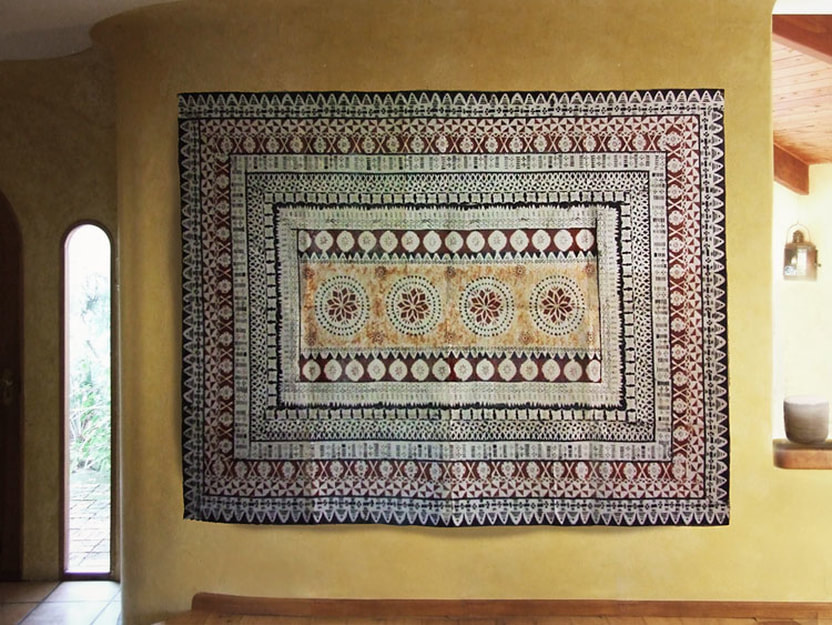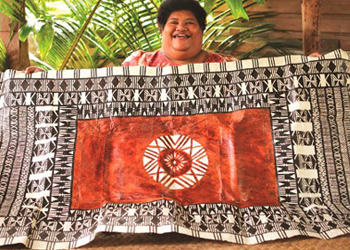Masi is a type of textile, it is bark-cloth made from the inner bark of the paper mulberry tree (Broussonetia papyrifera). Like whale ivory, bark cloth too has a significance beyond just clothing. It is used for ceremonial occasions like weddings and funerals, given as gifts as a mark of respect and esteem, hung as a tapestry for major meetings and gatherings, restricted mostly to the chiefly classes.
Each of the Fijian clans have their distinctive motifs. While the cultivation of the tree is the men's domain, the making of the cloth from the inner bark and producing the finished design is the creative work done by women, the skills passed on from mother to daughter. Masi is produced through out the Pacific, it is called tapa in Tonga and has other local names in the other islands. However, production has declined or stopped in many places but Fiji still preserves and carries on the traditional methods of Masi making.
 |
| Credit |
 |
| Masi motifs on a Fiji aircraft. Nifty or what? |
 |
| Fiji Airways logo and decoration at a check in countert. |
 |
| Credit. Makereta with her Masi for Fiji Airways. |
Did you know that the name 'Fiji' is a result of a mispronunciation? The indigenous Fijians called their homeland 'Viti' which the first Europeans encountered at Tonga during the voyage of Captain Cook. The crew misheard the Tongan's pronouncing 'Viti' as 'Fisi' and that is how Europeans came to call it Fiji.
How can I write about a culture and not include their music? Fiji is steeped in it - did you know that an oral musical tradition called Meke is the way Fijians preserved their history? Meke is a performance of song and dance that uses the lyrics to tell stories - transmit their legends, origins, practices of war and worship of spirits. It consists of the singers and percussionists sitting on the ground and dancers in traditional costumes performing the dance movements. Watch a video of a Meke performance at the International Dance Festival below:
Posted for the A-Z Challenge 2023

The cloth is beautiful. I wonder if they make as much selling the cloth as the time they spend. Sad that Markareta died so young. I am guessing that diabetes is rampant.
ReplyDeletehttps://findingeliza.com/
Makereta looks like a happy woman!
ReplyDeleteHow very beautiful - and what a precious heritage.
ReplyDeleteThose (and all) masi are works of art. Beautiful.
ReplyDeleteThe art is distinctive. I'm still thinking about them using their teeth to strip the bark. Dang!
ReplyDeleteHi Nila - brilliant post ... I went to an exhibition of bark cloth at the British Museum ... I have yet to draft up a post - perhaps sometime. I love the Masif motifs ... I do hope they don't lose their art and culture. As Joanne mentions above ... your posts are always so informative. Aspects of Fiji - excellent choice - cheers Hilary
ReplyDeleteI continue to be fascinated by all things Fijian, or should that be Vitian?
ReplyDeleteJemima